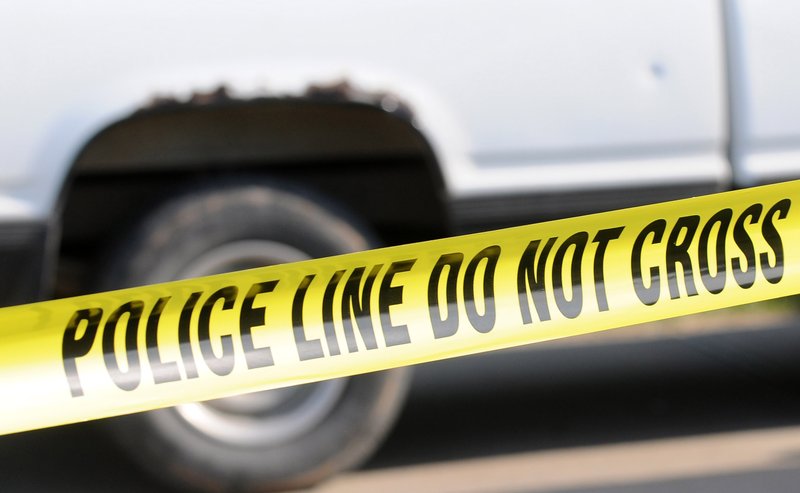The number of murders in Arkansas during 2020 jumped by 78 over 2019 as the state saw a 34 percent increase in homicide, according to data from the Arkansas Crime Information Center.
That increase is slightly higher than a 29 percent national rise in murder and non-negligent manslaughter reported by the FBI on Monday in its annual Uniform Crime Report.
According to the Crime Information Center data, the state reported 310 homicides last year, compared with 232 the year before. The FBI data was slightly different, showing the state with 308 homicide offenses in 2020 and 235 in 2019.
"They take a snapshot in March and we didn't publish our data until June," Ralph Ward, Arkansas National Incident-Based Reporting System manager, said Monday. "So they might have had a couple more cases still being investigated. We are a little more accurate in the timeline of reporting."
Data used by the FBI comes from information reported through the system by law enforcement agencies. Data submitted encompasses only 53 percent of the nation's population, according to the FBI website. Arkansas law enforcement had a higher response, with the data covering about 92 percent of the state's population.
Victims in Arkansas were most likely to be between the ages of 20 and 29, according to the FBI report. The crimes often happened at a residence with the relationship of the suspect unknown. A handgun was the most common weapon used in homicides, the report says.
The FBI recently retired a summary-based reporting system and transitioned to the National Incident-Based Reporting System, Connor Hagan, FBI public affairs officer in Little Rock, said Monday.
"It is more detailed," Hagan said. "We can identify when and where a crime occurred, characteristics of victims and offenders."
He said it is unlikely the change caused an increase in data. It instead enriches the data available so law enforcement agencies can use it to address certain needs.
North Little Rock saw a significant increase in homicides in 2020, with 20 reported compared with 12 the year before, for a 67 percent increase, according to Arkansas Crime Information Center data.
North Little Rock Capt. Brian Dedrick said the city has seen 18 homicides so far in 2021 but that number includes cases that will likely be recorded as justified homicide or negligent homicide by the end of the year. Justified and negligent homicide are recorded differently by the Crime Information Center.
The city actually had 23 people killed by some form of homicide in 2020 and 14 in 2019, he said. He said it is can be hard to track which cases the Arkansas Crime Information Center reports as homicide, justified or negligent homicide because the coding can change as cases move through investigation and the court system.
Little Rock's rate of increase in homicides also surpassed the state and nation, with a 36 percent increase from 2019 to 2020, according Crime Information Center data. The capital city had 49 homicides in 2020 and 36 in 2019.
The city already has surpassed last year's numbers with 51 homicides, according to Little Rock Police Department spokesman Mark Edwards, who was contacted mid-afternoon. He was unable to confirm by deadline whether the department tracks homicides in the same way as the Arkansas Crime Information Center.
Overall, Pulaski County saw an increase of 29 percent, with 56 homicides in 2019 and 89 in 2020, according to the Crime Information Center data.
Violent crime in general is up about 5.6 percent nationally from 2019 to 2020, according to highlights of the data released by the FBI. While homicide is up, other violent crimes have declined. Rape decreased 12 percent and robbery 9.2 percent during the same time period, the highlights say.
Overall, however, crime is still well below the historic highs reached in the early 1990s. And in many cities, including Washington, D.C., New York and Chicago, the number of killings is still far below the record-high tolls from nearly 30 years ago.
"Homicides jumped almost everywhere, while overall crime was down, so there's no real surprises in this," said Justin Nix, an associate professor of criminology and criminal justice at the University of Nebraska in Omaha.
Nix said the most likely culprits for the sharp spike in killings is twofold: the pandemic, and what he called a " police legitimacy crisis" brought on by the videotaped killing last year of George Floyd by a police officer in Minneapolis.
That incident and others have caused many people to trust police less, making them less willing to call for help, or provide information to investigators about killings, Nix said. He added that the effect is magnified when officers "de-police" by pulling back from patrol and other duties in the face of public criticism.
On top of that, Nix said, the data suggests there may be more people carrying and using guns in public spaces, leading to more killings.
Republican and Democratic elected officials disagree on what is causing the increase in homicides after years of decline, and how to stop it. Conservatives blame Democratic-run cities for what they say are overly restrictive policies placed on police departments; the Biden administration faults the easily availability of guns as a primary reason for more deaths, and the Justice Department is trying to stem the violence by cracking down on illegal gun trafficking.
Information for this article was contributed by Devlin Barrett and David Nakamura of The Washington Post.
